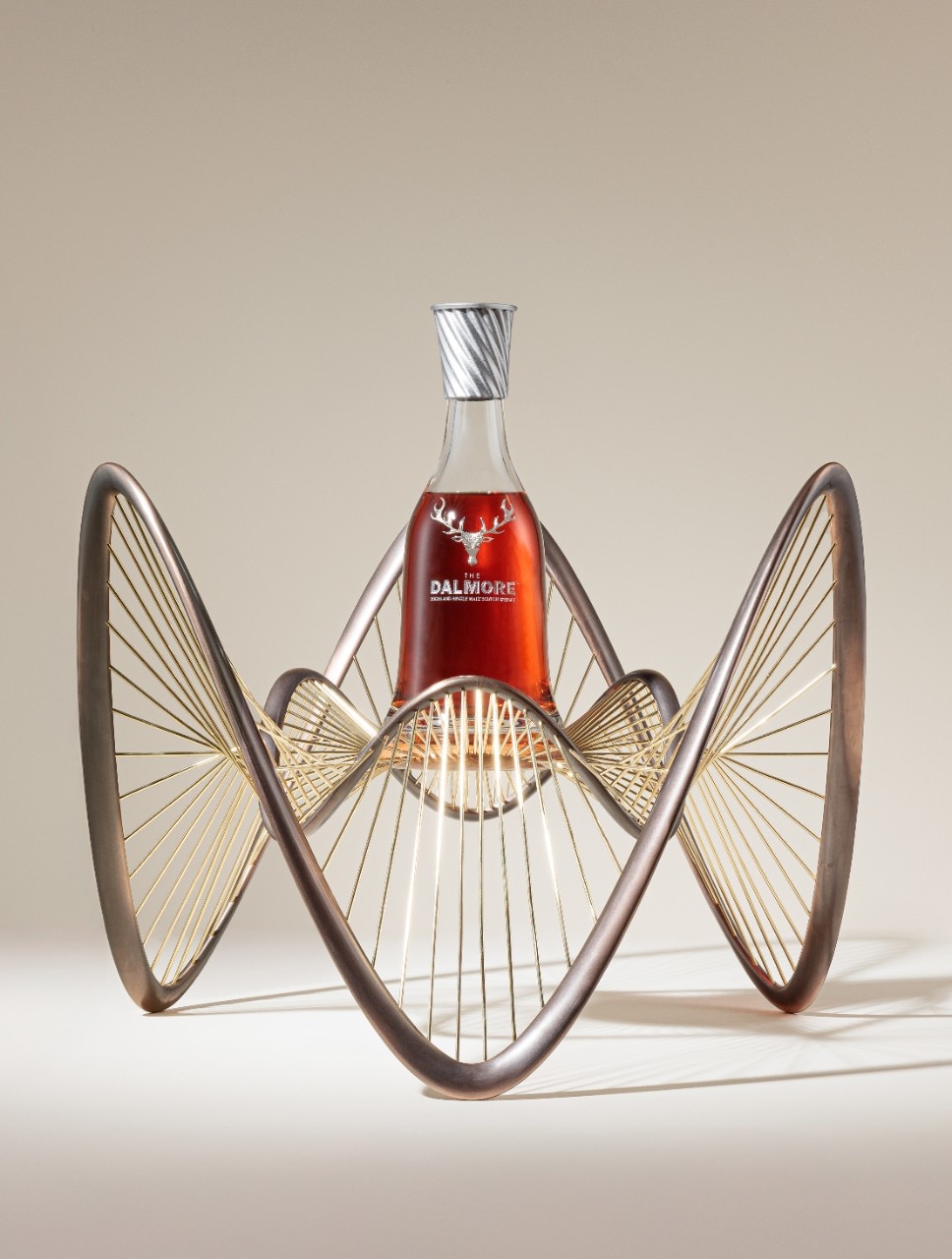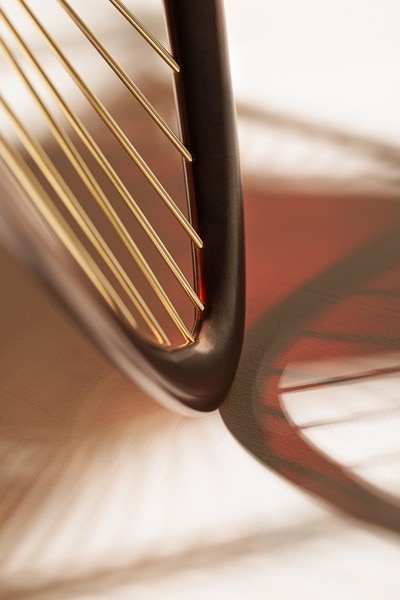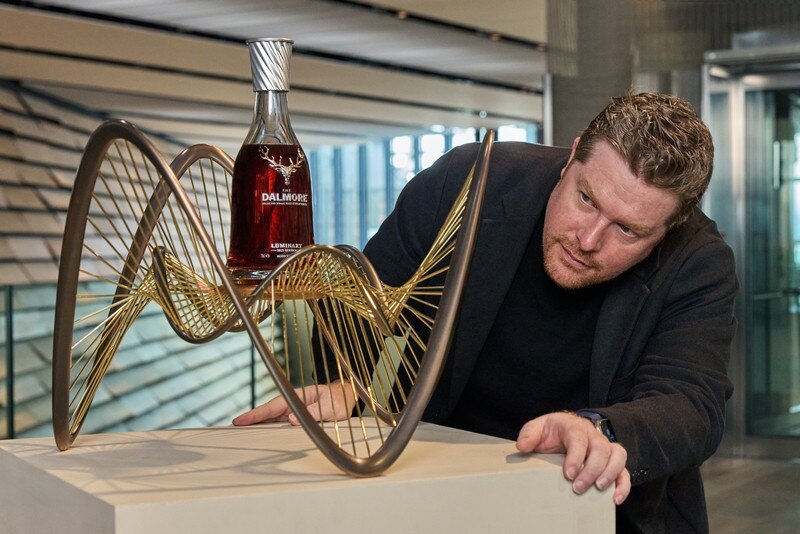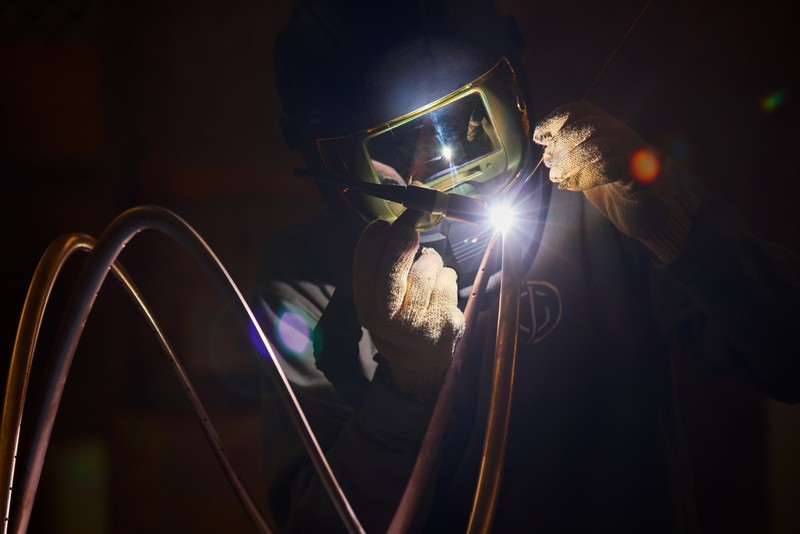The Rare is a bronze structure that cradles and elevates a bottle of 52-year-old whisky. Its shape echoes the curves of the hills surrounding the Dalmore distillery, which overlooks the Cromarty Firth. “I remember driving back from The Dalmore at sunrise and being struck by how the forms of the hills held the light and seemed to cradle the water. That moment really stayed with me and shaped the core of the design” says Ben Dobbin of Foster + Partners, the firm that created it. Before moving to the United States, where he is working on projects for the 2024 guest editor's studio, including the renowned Apple Park, Dobbin lived in Scotland as a student. This certainly influenced the concept of the project, he explains to Domus.
The Rare is the third chapter in The Luminary Series, which combines the tradition of whisky with innovative design by collaborating with international architects. Following projects with Kengo Kuma and Zaha Hadid Architects, this year's collaboration is with Foster + Partners and Ben Dobbin.
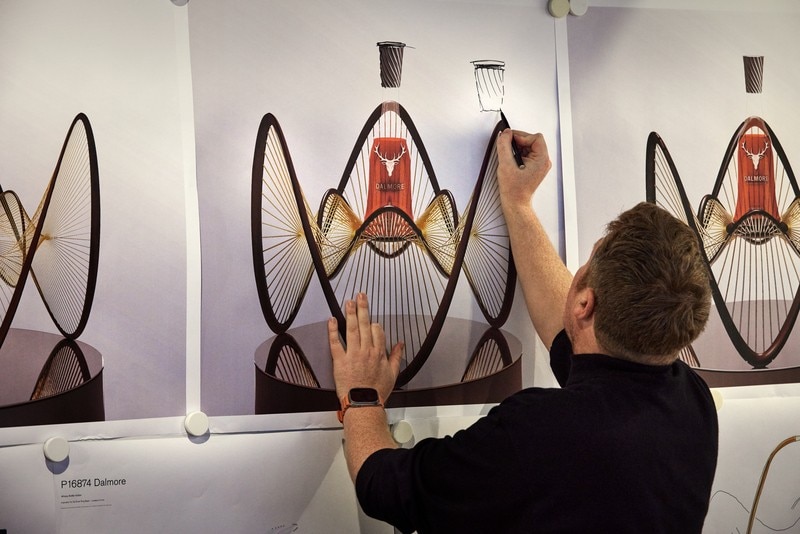
Dobbin worked closely with Richard Paterson and Gregg Glass, the master distillers at The Dalmore. “Working with such established whisky makers The Dalmore’s Richard Paterson and Gregg Glass was genuinely special, and as whisky makers they approach their craft as a creative process they do think about flavour the way designers think about form- iteratively, curiously, always refining - that was a real point of connection for us.” This shared approach was an important point of contact for the architect. “We architects also design for the future. Sometimes what you draw today won't come to life for 10, 20 or even 30 years. It's the same with whisky.”
At first, I had lots of ideas - abstract concepts floating around in my head. But when I visited The Dalmore Distillery, I threw all of that out.
The search for integration between the work and the structural technique is central to this project and to the studio led by Norman Foster. "In order to identify the central creative idea - and raising the bottle - immediately it necessitated a structural solution." comments Dobbin. The work is based on the principle of "tensegrity", a term coined by Buckminster Fuller. This structural technique plays on the coexistence of rigid structures and cables to generate an integrated system in which tension and compression remain in balance.
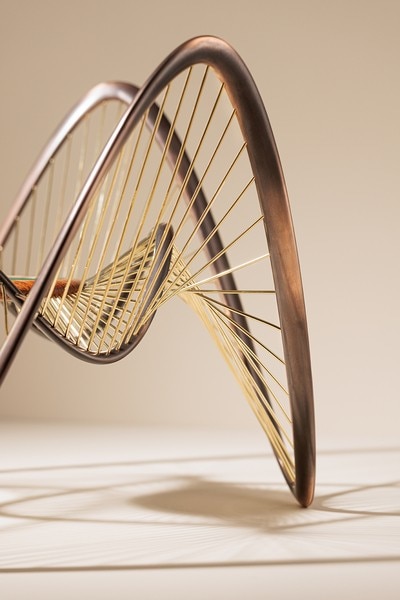
When it came to defining the shapes, Dobbin admits to having been influenced by the work of Barbara Hepworth, one of the most renowned English sculptors of the 20th century; the design of musical instruments; and “innovative engineers such as Félix Candela”, whose work is exemplified by the curves of the Oceanographic Park in Valencia.
However, despite these similarities, working on an architectural project is very different from creating a small-scale object. “Working on projects like Apple Park" a project in which Dobbin was personally involved with Foster + Partners, "involves large teams and complex coordination, whereas this collaboration - being unbriefed -offered more freedom, allowing me to approach the design with far fewer constraints and a more instinctive mindset".
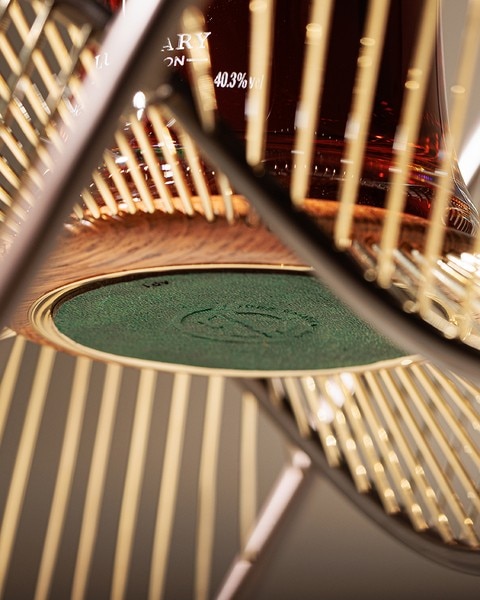
The entire project, presented at the Venice Architecture Biennale, which has just opened to the public with its 19th edition curated by Carlo Ratti, is being carried out with the participation of the V&A Dundee design museum, which has co-curated the initiative since its inception. The objects, which are true works of art, are always auctioned by Sotheby's to support the museum. Since the partnership began and with the previous editions, The Dalmore has already raised over £200,000.


